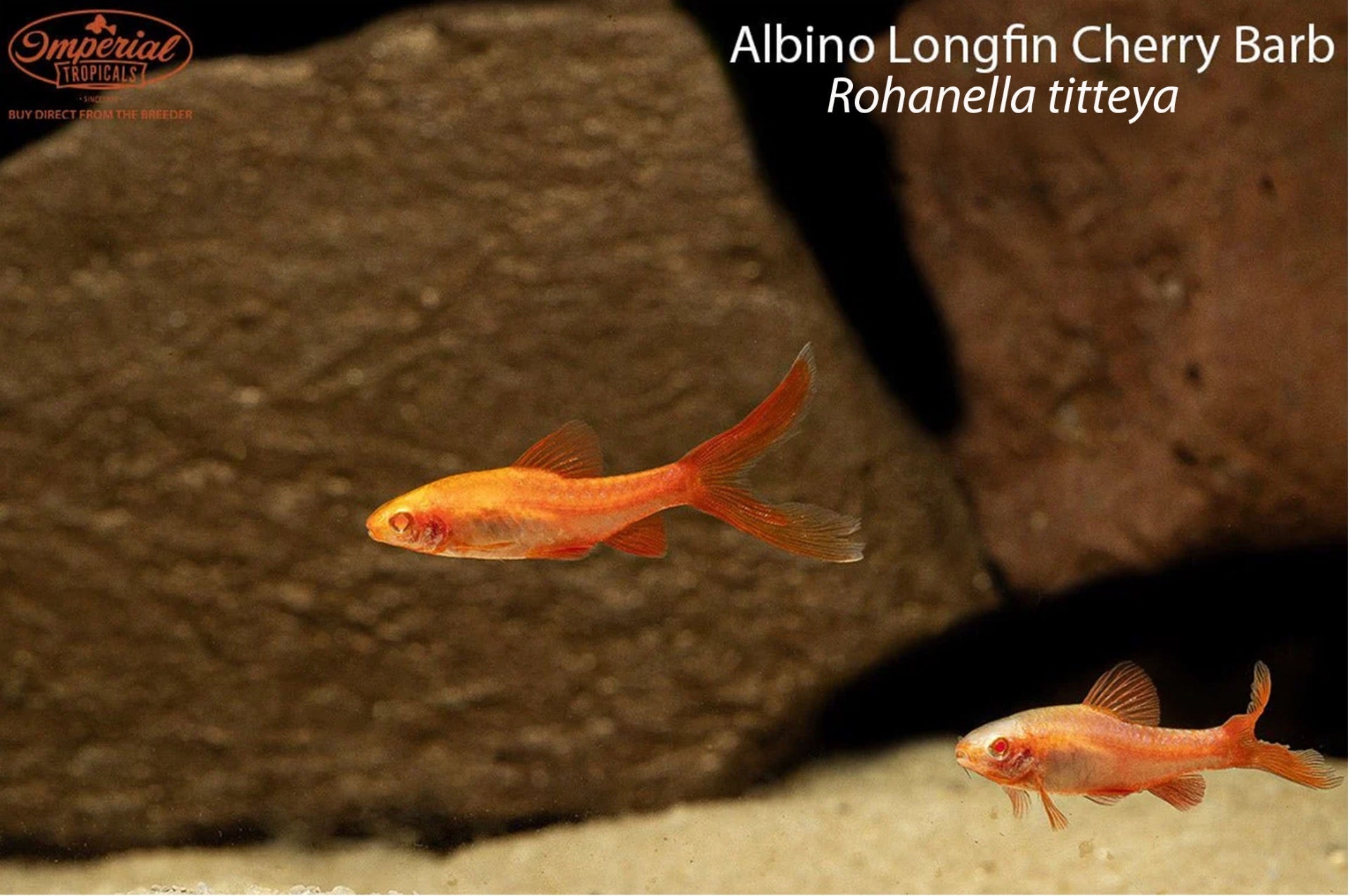
Remarks: These cherry barbs have the longfin gene. As the name implies, they have long, flowing caudal fins giving them a very elegant look. To prevent damage to these fins, it is recommended to avoid nippy species such as other barbs as tankmates.
If you're looking to maximize the color-to-size ratio of your fish, you'll be hard pressed to beat cherry barbs (Rohanella titteya). Males are an electric red color that can be spotted from across the room, despite their small average size of 1-1.5". Females sport golden-orange bodies and may be required for males to show their full colors. The albino variant of this species is closer to pink than red in both males and females.
Cherry barbs are endemic to the rainforests of Sri Lanka where they can be found in shallow streams with plenty of leaf litter, soft sand, fallen twigs, and shade provided by overhanging vegetation. These waters are clear or mildly tannin-stained, soft, acidic, and mildly warm. Unfortunately, these fish are heavily threatened by habitat destruction resulting in wild populations being so few in number that export of wild fish is currently prohibited. This means that cherry barbs available in the hobby are captive bred and their breeding should be encouraged to have stock to replenish their natural habitats once they are restored.
With cherry barbs being extensively captive bred since their entry into the hobby, they have become very tolerant in regards to water chemistry making them an excellent, hardy choice for beginners. However, despite their ability to survive in a broad range of conditions, it is best to mimic their natural habitat. Keeping cherry barbs in soft, acidic, mildly warm water with plenty of vegetation and botanicals as well as minimal light will not only have them at their healthiest, but also display their best coloration and encourage them to be out and about rather than hiding timidly. Feeding a varied and high quality diet supplemented by the occasional feeding of small, live foods such as baby brine shrimp or daphnia will also bring out the best in your cherry barbs.
Cherry barbs are a shoaling species that naturally live in large groups in the wild. If kept in small numbers in captivity, it is likely for this fish to become stressed and nip the fins of tankmates. The best way to prevent this is to keep them in groups of 6 or more so they are preoccupied with displaying and sparring rather than harassing other species. When comfortable and with all their needs met, cherry barbs can make an excellent community fish with their hardy nature, active behavior, and bright colors.
Cherry barbs were previously classified as Puntius titteya but after a review of the Puntius genus was finished in 2023, it was reclassified as Rohanella titteya. This makes them the only member of their genus establishing Rohanella as a monospecific genus. These barbs were not the only ones to receive a new classification as the Puntius genus had been used as a collection pot for smaller barb species until their true classification could be further analyzed. If you would like to learn more, you can find the research paper here.

